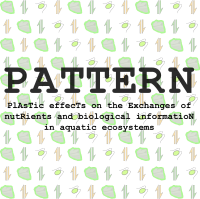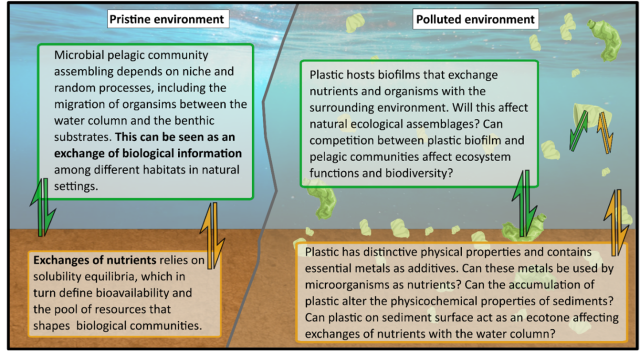PATTERN
Plastic pollution in freshwater environments is a pressing global concern due to its ability to accumulate in the environment. The long-term impacts of this pollution on freshwater ecosystems are still to understand. In PATTERN project, we aim to understand how plastics can influence nutrient composition and the natural exchanges in biological information, with a focus on the biofilms colonizing plastic’s surface. We aim to rate the environmental relevance of these processes and to assess the threshold at which plastic pollution disrupts freshwater ecosystem functioning.

About the project
Plastic pollution is a global environmental issue, and freshwater ecosystems are particularly vulnerable to the accumulation of plastic waste and microplastics. The continuous increase in plastic amounts in these environments introduces a new and abundant component to the water ecosystem. Plastic has unique physical and chemical properties that make it a suitable substrate for colonization by various microorganisms, including bacteria and algae.
These microorganisms form biofilms on the plastic surface, which can significantly impact natural ecosystem fluxes of nutrients and biological information. Biofilms have the capability to extract chemicals from plastics, compete with the natural algal community for nutrients, and exchange organisms with natural sediments and water. These processes can disrupt natural nutrient cycles and alter the composition of algal communities, potentially undermining the functioning of freshwater ecosystems.

Project activities
In PATTERN project, we aim to assess how biofilms growing on plastics compete for nutrients with natural communities and whether plastics facilitate the dispersal of organisms present in the biofilms through laboratory experiments. Collaborating with the University of Insubria, Como, Italy, we will generate plastic reference materials and characterize them.
Our approach involves first evaluating the potential effects of plastic additions on natural nutrient and biological information exchanges in simulated freshwater conditions. Then, we will increase complexity by integrating natural sediments. In these experiments, we will analyze community responses in terms of taxonomy and functional traits. We will also measure how the nutrient concentration will be affected by the presence of plastic.
Finally, we will use the obtained information to develop models aimed at assessing the threshold of plastic pollution that leads to altered ecosystem functioning in freshwater bodies.
 Gilberto Binda
Gilberto Binda
 Ana Margarida Pinto Costa
Ana Margarida Pinto Costa
 Christian Vogelsang
Christian Vogelsang
 Rachel Hurley
Rachel Hurley